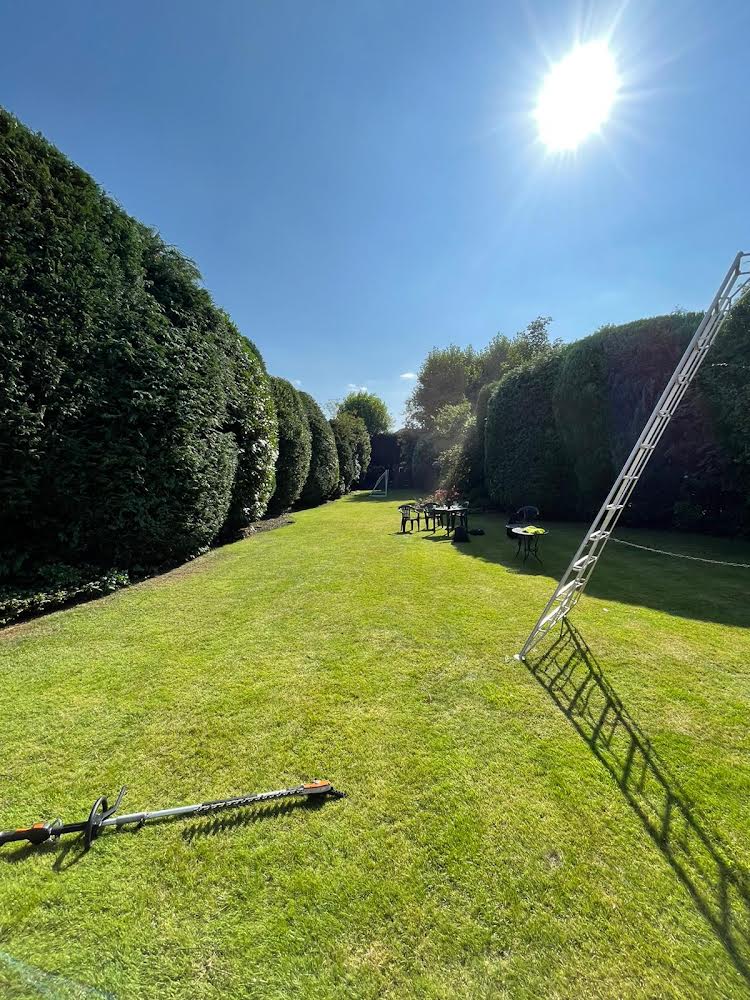Hedge Trimming
Hedge trimming and maintenance in the West Midlands. The Tree Doctors have the precision and practice needed to cut hedges attractively and professionally.
To get your FREE quote, click HERE to fill out a contact form
Professional Hedge Trimming Services
It’s easy to let hedgerows overgrow to unattractive heights and become unhealthy. Our tree surgeons can offer an affordable and professional hedge trimming service that makes it easy for land and homeowners to attain a beautiful-looking hedge.
The Tree Doctors are happy to prune and shape trees and hedges, giving your greenery a defined and appealing appearance. A well-maintained and trimmed hedgerow will not only resolve neighbour disputes but it will improve the appearance of the entire surrounding area furthermore adding to the longevity of the hedge. Using the right tools and incredible expertise, we can ensure that trees and hedges are properly pruned and shaped, without risking the health of the hedge or tree. Many benefits come from pruning your hedges, but getting them done professionally means you have one large task off your hands!
The Benefits of Regular Hedge Trimming
Improved Aesthetics of your Garden or Driveway:
With regular maintenance, your hedges' appearance will be more appealing, creating a neat appearance that can significantly boost your home's curb appeal.
Healthier Plants:
Beyond aesthetics, hedge trimming promotes plant health by removing dead or diseased branches, encouraging new growth, and improving air circulation. Some flowering hedges will thank you for regular hedge trimming, as their flowers will flourish more.
Functionality:
Well-maintained hedges provide functional advantages such as privacy, sound reduction, wind protection, and increased safety. Avoid neighbourly disputes with neat hedges and maintain your privacy with a professional hedge trimmer who can ensure straight hedges.


Hedge Reductions
Overgrown hedges, particularly Leylandii, often require significant reduction. While Leylandii can be challenging to reduce without harming the hedge, other species like Hawthorn, Field Maple, and Laurel tolerate heavier pruning. Over-pruning Leylandii can lead to a decline in health, so a balanced approach is crucial. This involves careful consideration of top and side reductions to ensure future growth.
With our expertise, our hedge trimmers will address your hedge's needs with the right tools for reducing foliage and neatly trimming your garden hedges.
Hedge Trimming
& Hedge Shaping
We can trim hedges of any size, whether they're tall or wide. Our skilled team uses a range of professional tools, including short and long-reach hedge trimmers. To access those hard-to-reach heights, we employ techniques like using step ladders, MEWPs (cherry pickers), or even climbing, ensuring every part of your hedge is meticulously trimmed. For specific hedge shaping requests, our team will meet your needs, tailoring our services around you.
When to Trim and Prune Your Hedges
Hedges are vital wildlife habitats, providing shelter and food for a diverse range of species. As the most widespread semi-natural habitat in the UK, they support a rich ecosystem. Their flowers, berries, and nuts are essential food sources for invertebrates, birds, and mammals. Hedges with mature trees offer even greater benefits, creating diverse microhabitats that attract a wider variety of wildlife.
To ensure the well-being of our feathered and furry friends, it's crucial to time your hedge pruning carefully. Avoid cutting between March and September to prevent disturbing nesting birds. Additionally, trimming after harvest can significantly reduce the availability of berries essential for overwintering birds like fieldfare and redwing.
The ideal time to prune your hedge is in February or March. This winter cut minimises stress on the dormant plants and allows them to recover and grow healthily. By following these guidelines, you can contribute to a thriving wildlife habitat while maintaining a well-groomed garden.
How Often Should You Prune Your Hedge?
For a more formal appearance, consider trimming your hedge once or twice a year. To avoid disturbing nesting birds, schedule these trims before and after nesting season.
Delaying hedge cutting until late winter offers several benefits for wildlife. It provides essential food sources like berries for wintering birds and early emerging insects that rely on spring flowers. Additionally, it offers shelter for moths and other animals during colder months.
FAQs on Hedge Trimming
Get in touch with our Chas-accredited tree surgeons today for a free quote!
Our services are tailored towards homeowners & commercial landscapes / public sector companies, offering a range of tree and hedge services, including but not limited to:
- Tree Cutting & Reductions
- Tree Felling
- Tree Removal
- Hedge Trimming
- Dead Wooding
- Tree Pruning
- Stump Grinding
- Emergency Tree Services
Areas We Cover Include: Belbroughton, Stourbridge, Halesowen, Kidderminster, Kingswinford, Bromsgrove, Harborne, Hagley, and other areas across The West Midlands
Working Hours: Monday-Saturday 6am-6pm




